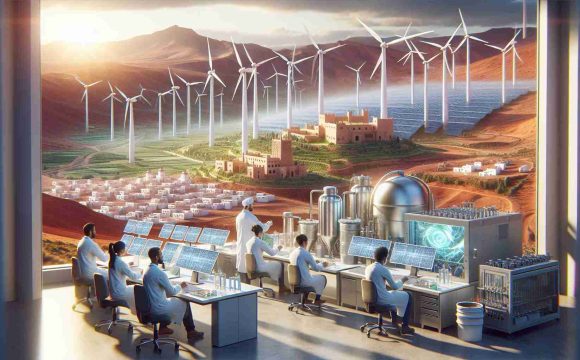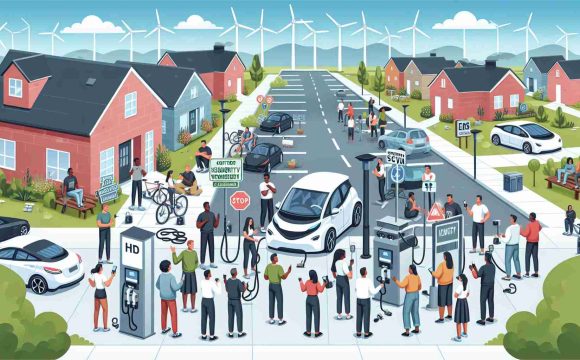Transforming the Hydrogen Landscape
In a bold move to reshape clean energy, the Biden administration has introduced new regulations that clarify tax credit eligibility for hydrogen production. These measures aim not only to promote clean energy innovations but also to sustain the financial viability of aging nuclear power plants.
Under the newly established guidelines, clean hydrogen producers can gain tax credits based on their emissions profile. Specifically, hydrogen produced with minimal greenhouse gas emissions can earn credits as high as $3 per kilogram. Notably, nuclear power facilities could qualify for tax credits based on their electricity output, particularly if they are at risk of shutting down. This is a significant shift aimed at recognizing the role of nuclear energy in a low-carbon future.
The administration’s strategy is seen as vital for industries like steelmaking and long-haul shipping, where hydrogen could replace fossil fuels. Currently, most hydrogen is produced from fossil fuels, raising environmental concerns. The emphasis on cleaner production methods—including nuclear-powered hydrogen—is crucial for meeting climate targets.
As the U.S. gears up for a future reliant on green hydrogen, the new regulations intend to lower historical economic barriers and enhance investment in this sector. Anticipation builds as industry stakeholders expect a promising roadmap that could stimulate billions in private investment, further embedding hydrogen as a cornerstone of a sustainable energy landscape. The transition from theory to reality appears closer than ever, fueled by these innovative tax incentives.
Hydrogen Revolution: Tax Credits Propel Clean Energy Forward
Introduction to New Hydrogen Regulations
The recent announcement by the Biden administration to redefine tax credit eligibility for hydrogen production marks a significant milestone in the clean energy sector. This initiative seeks to accelerate the transition toward hydrogen as a sustainable energy source while providing much-needed support for nuclear energy infrastructure.
Key Features of the New Regulations
1. Tax Credit Mechanism: Clean hydrogen producers can earn tax credits based on their emissions profile. Hydrogen generated with substantially low greenhouse gas emissions could receive credits of up to $3 per kilogram. This incentivizes cleaner production methods and encourages industries to adopt sustainable practices.
2. Support for Nuclear Power: The regulations allow nuclear power plants to qualify for tax credits based on their electricity production. This provision is particularly beneficial for aging facilities at risk of closure, helping to sustain their operational viability and emphasizing the role of nuclear energy in a low-carbon future.
3. Focus on Critical Industries: The push for cleaner hydrogen is especially pertinent for high-emission sectors such as steelmaking and long-haul shipping. These industries’ reliance on fossil fuels presents a substantial opportunity for hydrogen adoption as a cleaner alternative.
Pros and Cons of the New Hydrogen Initiative
– Pros:
– Encouragement of Clean Production: By rewarding low-emission methods, these regulations promote the development of green hydrogen technologies.
– Job Creation: The expected increase in investment could lead to job growth in the renewable energy sector, providing new opportunities for skilled workers.
– Enhanced Energy Security: A shift to hydrogen can diversify energy sources, reducing dependence on fossil fuels.
– Cons:
– Implementation Challenges: Transitioning from a fossil fuel-based system to one centered on hydrogen could face technical and economic hurdles.
– Market Readiness: There may be concerns regarding the current infrastructure’s capability to support widespread hydrogen use.
Market Insights and Trends
The hydrogen market is on the brink of significant growth, spurred by these new regulations and the increasing focus on sustainability. Analysts predict that investment in clean hydrogen technologies could escalate, potentially reaching billions of dollars as industries aim to meet rigorous climate targets.
Innovations in Hydrogen Production
As part of the broader strategy, advancements in hydrogen production technologies are crucial for maximizing efficiency and minimizing costs. Innovations such as electrolysis powered by renewable energy sources are expected to gain traction, further reducing the carbon footprint associated with hydrogen generation.
Security and Sustainability Aspects
The emphasis on hydrogen aligns with global efforts to enhance energy security while promoting sustainability. Hydrogen produced from domestic resources can minimize reliance on international fossil fuel markets, offering a resilient energy alternative that supports national interests and environmental goals.
Conclusion
The Biden administration’s regulatory announcement represents a transformative step in the clean energy landscape, particularly in the hydrogen sector. By integrating tax credits and supporting nuclear energy, the initiative is poised to foster innovation, spur investment, and catalyze a sustainable energy future.
For additional insights on clean energy regulations and the evolving hydrogen market, visit energy.gov.







